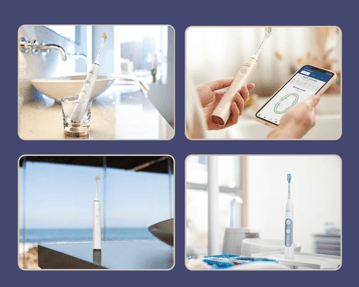The Problem and the Science
It was reported in a 2017 systematic analysis of the burden of oral diseases in 195 countries that between 1990 and 2015 there was no improvement seen in disease prevalence rates, including a 7.4% prevalence rate of severe periodontal disease.1 The most recent study published in the United States on the prevalence of periodontitis reported an estimated 42% of adults over the age of 30 have the disease.2 According to the Centers for Disease Control and Prevention, prevalence increases with age and 70.1% of people aged 65 or older have periodontal disease.3
As dental professionals know and advise their patients, preventive care and regular dental visits for prophylaxis and examinations are necessary for good oral health. Routine dental visits allow dental professionals to identify any problems early—when they may be simpler to resolve. But disparities in oral health exist for people who do not have equal access to dental care due to lack of insurance, being unable to take time off work, or living in communities that do not provide fluoridated water, school sealant programs, or public transportation. Limited access to healthy foods also impacts oral health.4

Oral conditions that have the most impact on general health are caries, severe gingival disease, and severe tooth loss. These conditions can cause pain and infections that diminish quality of life due to the inability to eat properly, speak well, be absent from or result in poor performance in school, and result in loss of work and/or productivity.5-8
Older adults may have poor oral health, especially if they are economically disadvantaged, have no insurance, are members of racial and ethnic minorities, have physical disabilities or cognitive decline, are homebound, or are living in nursing homes. They are especially susceptible to untreated dental caries, gingival disease, tooth loss, oral cancer, and chronic conditions and diseases that impact their ability to physically brush their teeth properly. This group is also more likely to be taking medications that reduce saliva flow, which further increases their caries risk.9
With the wealth of information available, even in mainstream media, on the oral/systemic connection, periodontal disease is still surprisingly prevalent. A review article by Slot et al in 2020 noted that specific recommendations for patients with periodontitis are lacking, which helps explain this disconnect between understanding the impact of periodontal disease and eradicating it.10
Philips Oral Heathcare is on a mission to improve 2.5 billion lives a year by 2030 by looking beyond gingivitis and taking on periodontitis. It will do this by continuing to innovate oral hygiene technologies and supporting dental professionals’ efforts to educate and motivate their patients.

A partnership between academic research, dental practitioners, and healthcare industry is critical to ensuring patient health, long-term. -- Purnima Kumar, BDS, MS PhD, Professor of Periodontics
It is imperative for patients with periodontitis to perform excellent at-home oral care to improve their condition and maintain post-treatment status. A study published in 2019 documented that when patients who were waiting for periodontal care by a specialist were given oral hygiene instruction “with motivation,” versus no motivation or instructions, the reduction in biofilm, bleeding on probing (BOP), and pocket depth was statistically significant.11
Also published in 2019, the results of an 11-year longitudinal study following patients’ oral home care indicated that using a power toothbrush resulted in “significantly less progression of probing depth, attachment level, and decayed, missing, and filled surfaces” than using a manual toothbrush. The participants using a power toothbrush also lost fewer teeth than manual toothbrush users.12
Another 2020 study was designed to address the apparent gap in periodontitis patients being given adequate home care tools and strategies, with results published in 2024. This study compared the effects of powered and manual toothbrushing on BOP and other clinical signs of periodontitis in patients who had received scaling and root planing (SRP).13

We have lots of studies that show our devices improve oral health, but we wanted to take it one step further. Most periodontal treatment studies are what can happen in the chair. This study was really confined to what can a patient do at home. -- Michelle Starke, PhD, Sr. Clinical Scientist, Philips
Participants ranged in age from 18-75 and had been diagnosed with either Stage I or Stage II periodontitis. They were instructed to brush their teeth two times daily with either a powered toothbrush (PTB) or a manual toothbrush (MTB) and were not allowed to use any other types of oral hygiene aids or products or perform interdental cleaning. The study subjects were evaluated every 4 weeks for: BOP, surface biofilm (MPI), probing pocket depth (PPD), and clinical attachment level (CAL) until week 24.13
In the 299 subjects who completed the study, it was found that when SRP is combined with daily use of a powered toothbrush, the clinical symptoms of periodontitis and surface biofilm levels were significantly reduced compared to a manual toothbrush, and the effects of SRP were maintained for the study period. The benefits of using a powered toothbrush after SRP were clinically measurable for BOP, PPD, and biofilm levels up to 24 weeks in Stage I/II periodontitis subjects versus manual toothbrush use. In fact, the manual brush users’ status returned to their initial PPDs by week 16 and their conditions continued to decline throughout the study. This demonstrated that supra-gingival biofilm control impacts periodontal maintenance therapy significantly. The outcomes of the study indicate that using a power toothbrush after receiving SRP may result in the periodontium remaining stable.13

We’re not simply curing or treating disease. We are empowering the patient. We’re putting the patient back in the driver’s seat of their own health. -- Purnima Kumar, BDS, MS PhD, Professor of Periodontics
Halting the progression of periodontal disease requires constant collaboration between dental professionals and their patients. Achieving oral health relies on a combination of receiving professional dental treatments and using the appropriate home care tools as well as patient support, education, and behavior modification.
Click here to download the Philips Sonicare ebook and learn more.
References
- Kassebaum NJ, Smith AGC, Bernabé E, et al. Global, regional, and National Prevalence, incidence, and disability-adjusted life years for oral conditions for 195 countries, 1990-2015: a systematic analysis for the global burden of diseases, injuries, and risk factors. J Dent Res. Apr;96(4):380-387. doi: 10.1177/0022034517693566. PMID: 28792274; PMCID: PMC5912207.
- Eke PI, Thornton-Evans GO, Wei L, Borgnakke WS, Dye BA, Genco RJ. Periodontitis in US adults: National Health and nutrition examination survey 2009-2014. J Am Dent Assoc. 2018; 149(7): 576-588.e6. doi:10.1016/j.adaj.2018.04.023.
- Centers for Disease Control and Prevention. Basics of Oral Health. Oral Health Conditions. https://www.cdc.gov/oralhealth/conditions/periodontal-disease.html.
- Centers for Disease Control and Prevention. Basics of Oral Health. Disparities in Oral Health. https://www.cdc.gov/oralhealth/oral_health_disparities/index.htm.
- Pyo J, Lee M, Ock M, Lee J. Quality of life and health in patients with chronic periodontitis: a qualitative study. Int J Environ Res Public Health. 2020 Jul 7;17(13):4895. doi: 10.3390/ijerph17134895. PMID: 32645897; PMCID: PMC7370173.
- Seirawan H, Faust S, Mulligan R. The impact of oral health on the academic performance of disadvantaged children. Am J Public Health. 2012 Sep;102(9):1729-34. doi: 10.2105/AJPH.2011.300478. Epub 2012 Jul 19. PMID: 22813093; PMCID: PMC3482021.
- Jackson SL, Vann WF Jr, Kotch JB, et al. Impact of poor oral health on children’s school attendance and performance. Am J Public Health. 2011 Oct;101(10):1900-6. doi: 10.2105/AJPH.2010.200915. Epub 2011 Feb 17. PMID: 21330579; PMCID: PMC3222359.
- Lima RB, Buarque A. Oral health in the context of prevention of absenteeism and presenteeism in the workplace. Rev Bras Med Trab. 2019 Dec 1;17(4):594-604. doi: 10.5327/Z1679443520190397. PMID: 32685760; PMCID: PMC7363255.
- Centers for Disease Control and Prevention. Basics of Oral Health. Older Adult Oral Health. https://www.cdc.gov/oralhealth/basics/adult-oral-health/adult_older.htm.
- Slot DE, Valkenburg C, Van der Weijden GAF. Mechanical plaque removal of periodontal maintenance patients: a systematic review and network meta-analysis. J Clin Periodontol. 2020; 47(Suppl 22): 107-124. doi:10.1111/jcpe.13275.
- Preus HR, Al-Lami Q, Baelum V. Oral hygiene revisited. The clinical effect of a prolonged oral hygiene phase prior to periodontal therapy in periodontitis patients. A randomized clinical study. J Clin Periodontol. 2020; 47(1): 36-42. doi:10.1111/jcpe.13207.
- Pitchika V, Pink C, Völzke H, et al. Long-term impact of powered toothbrush on oral health: 11-year cohort study. J Clin Periodontol. 2019; 46(7): 713-722. doi:10.1111/jcpe.13126.
- Jenkins W, Starke EM, Nelson M, Milleman K, Milleman J, Ward M. The effects of scaling and root planing plus home oral hygiene maintenance in Stage I/II periodontitis population: A 24-week randomized clinical trial. Int J Dent Hygiene. 2024;00:1-9. doi:10.1111/idh.12783.